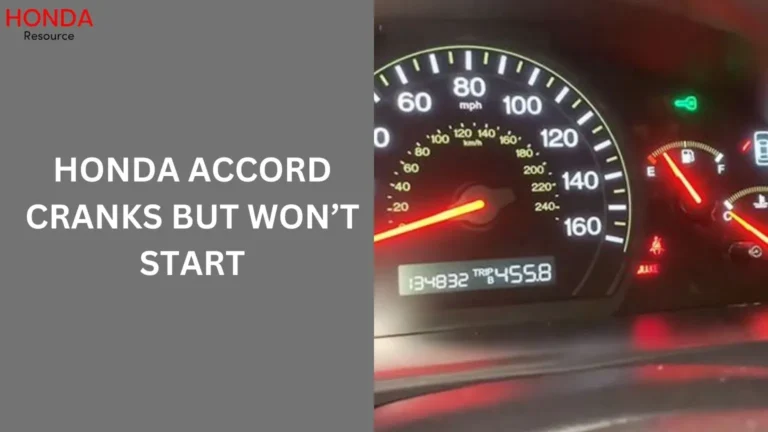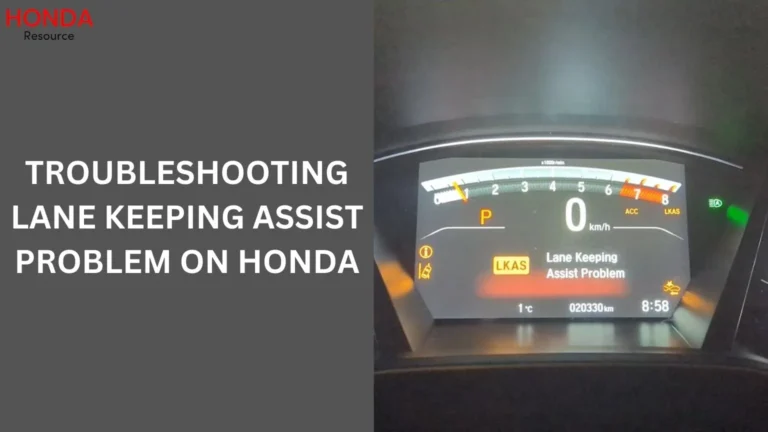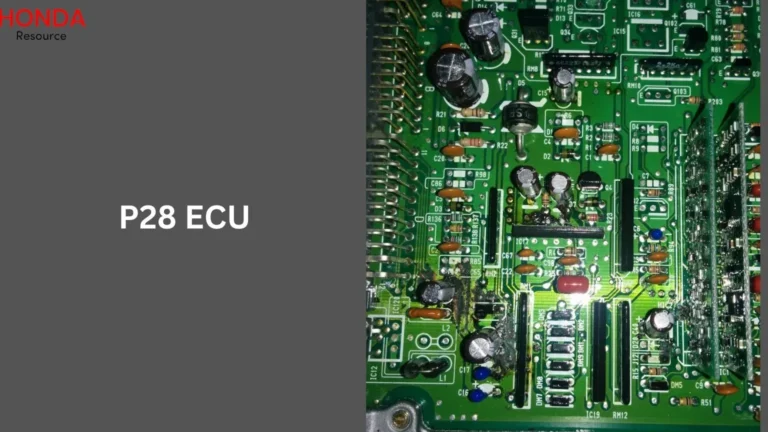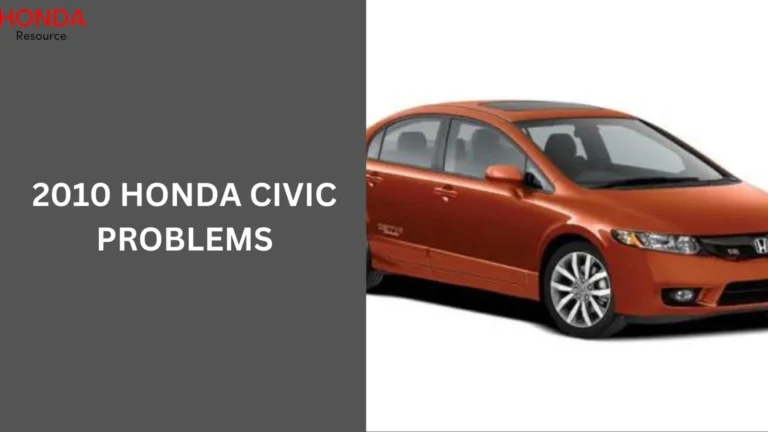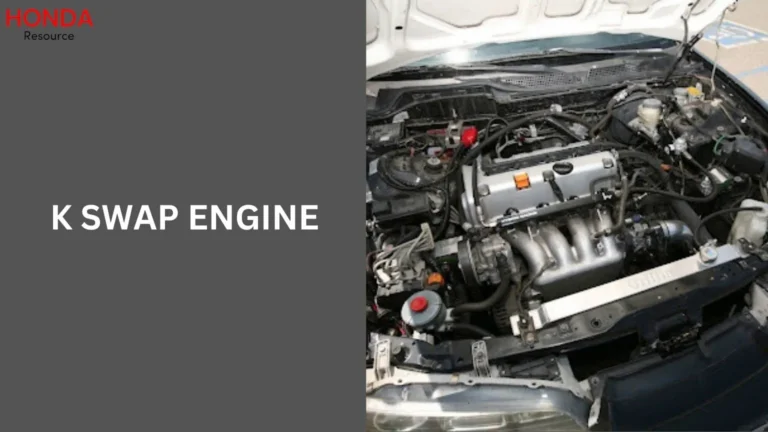Honda SVC Accord (Mean, Causes & Fixing Tips) In 2024
When it comes to vehicle performance and safety, Honda has always been at the forefront of innovative technologies. One such technology is the Honda SVC. But what exactly is Honda SVC, and why is it so important? Let’s dive into the details and understand how it can make your driving experience smoother and safer.
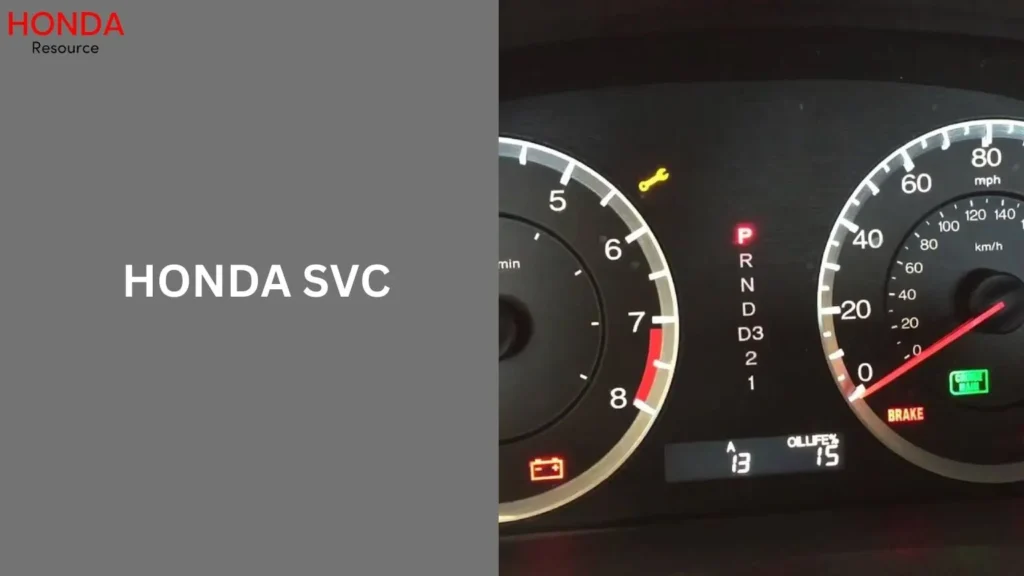
What is Honda SVC?
Honda SVC stands for Steering Vibration Control. It’s a sophisticated system designed to improve vehicle stability and handling by controlling the vibrations in the steering wheel. Over the years, SVC technology has evolved, incorporating advanced sensors and algorithms to provide better feedback and control.
How Honda SVC Works
At its core, Honda SVC uses sensors to detect vibrations and irregularities in the steering system. These sensors send signals to a control unit, which then adjusts the steering dynamics to counteract these vibrations. This ensures that the driver maintains better control over the vehicle, especially during high-speed driving or on rough terrains.
Benefits of Honda SVC
- Improved Handling and Stability With Honda SVC, the vehicle’s steering becomes more responsive, allowing for smoother turns and better maneuverability. This is particularly beneficial during sharp turns or evasive maneuvers.
- Enhanced Safety Features By reducing unwanted vibrations, SVC enhances the overall safety of the vehicle. It minimizes the risk of losing control, especially in adverse driving conditions.
- Better Fuel Efficiency Believe it or not, smoother steering can contribute to better fuel efficiency. With less effort needed to control the vehicle, the engine can operate more efficiently, leading to savings at the pump.
Common Issues with Honda SVC
Honda Steering Vibration Control (SVC) is a sophisticated technology designed to enhance vehicle handling and stability. However, like any complex system, SVC can experience issues that may affect its performance. Understanding these common problems can help you identify and address issues promptly, ensuring your driving experience remains safe and smooth.
Warning Lights and Error Codes
One of the primary indicators of an issue with Honda SVC is the illumination of warning lights on your vehicle’s dashboard. These lights may signal faults within the SVC system, such as sensor malfunctions or communication errors with the control unit. Ignoring warning lights can lead to degraded system performance and potentially compromise safety.
Sensor Failures
SVC relies on sensors to detect steering vibrations and adjust system responses accordingly. Sensor failures can occur due to wear and tear, electrical faults, or environmental factors. Symptoms of sensor issues include erratic steering behavior, unexpected vibrations, or a lack of response from the SVC system during driving maneuvers.
Control Unit Malfunctions
The control unit serves as the brain of the SVC system, processing data from sensors and initiating corrective actions. Malfunctions in the control unit can result from software glitches, electrical failures, or physical damage. Signs of control unit issues may include inconsistent SVC operation, sudden changes in steering feel, or complete system failure.
Steering Wheel Vibrations
While Honda SVC is designed to minimize steering wheel vibrations, persistent or abnormal vibrations can indicate underlying issues. These vibrations may be caused by misaligned components, worn-out parts, or mechanical failures within the steering or suspension systems. Addressing these vibrations promptly can prevent further damage to SVC components.
System Calibration Errors
Proper calibration of SVC is crucial for optimal performance. Calibration errors can occur during system initialization, software updates, or due to improper servicing procedures. Symptoms of calibration errors include inaccurate steering responses, uneven vehicle handling, or discrepancies between steering input and vehicle movement.
Environmental Interference
External factors such as electromagnetic interference (EMI) or extreme weather conditions can affect SVC performance. EMI from nearby electronic devices or power lines may disrupt sensor signals, leading to temporary system malfunctions. Additionally, temperature fluctuations or moisture ingress can impact sensor accuracy and reliability.
Diagnosing SVC Problems
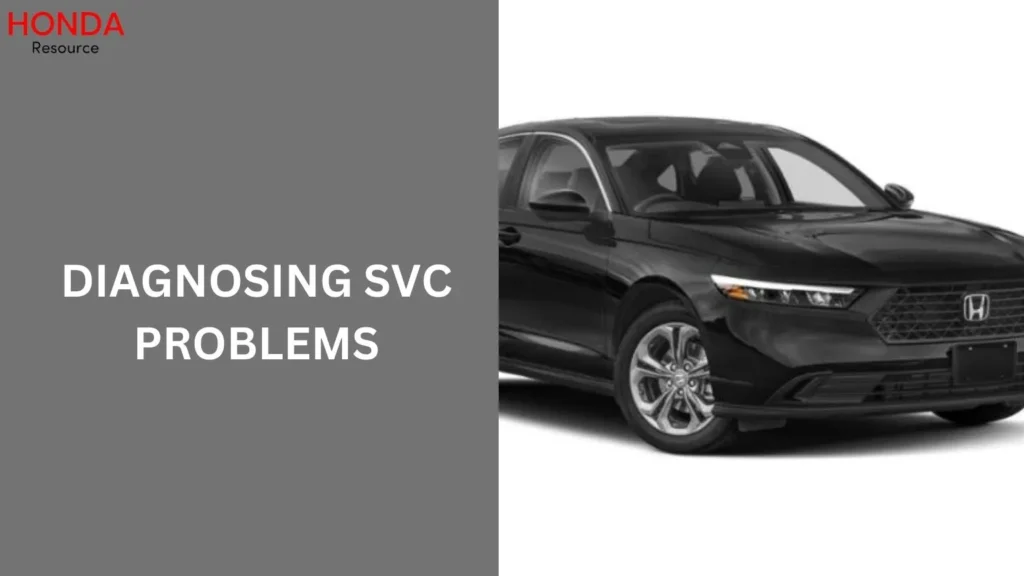
Diagnosing issues with Honda Steering Vibration Control (SVC) requires a systematic approach to pinpoint the root cause accurately. SVC is designed to enhance vehicle stability and steering response, but like any technology, it can experience malfunctions that affect performance. Understanding how to diagnose SVC problems can help you address issues promptly and maintain optimal driving conditions.
Using Diagnostic Tools
Diagnostic tools are essential for identifying SVC problems accurately. These tools connect to your vehicle’s onboard diagnostics system to retrieve fault codes and data from the SVC components. Common diagnostic tools include OBD-II scanners and manufacturer-specific diagnostic equipment. By accessing these tools, technicians can analyze sensor readings, control unit communications, and system responses to diagnose potential faults.
Common Symptoms to Watch For
Identifying common symptoms associated with SVC issues can provide valuable clues during diagnosis:
- Steering Wheel Vibrations: Unexpected or excessive vibrations in the steering wheel, especially during acceleration or braking, may indicate sensor failures or calibration errors within the SVC system.
- Warning Lights: Illumination of SVC-related warning lights on the dashboard, such as the Stability Control or SVC indicator, signals potential malfunctions that require immediate attention.
- Erratic Steering Response: Inconsistent steering response or delayed reactions to steering inputs can suggest issues with the control unit or sensor feedback.
- Abnormal Vehicle Handling: Changes in vehicle handling characteristics, such as drifting or pulling to one side, can result from SVC calibration errors or mechanical issues affecting steering dynamics.
Visual Inspection
A visual inspection of SVC components can help identify physical damage, loose connections, or signs of wear:
- Inspect Sensors: Check for visible damage or corrosion on SVC sensors located near the steering column or wheel hubs. Ensure sensors are securely mounted and properly aligned to detect steering vibrations effectively.
- Check Wiring Harnesses: Inspect wiring harnesses connected to SVC components for signs of fraying, loose connections, or damage caused by environmental factors.
- Review Control Unit Connections: Verify the integrity of connections to the SVC control unit, located within the vehicle’s electronic control module (ECM). Ensure connections are secure and free from debris or moisture ingress.
Road Test
Conducting a road test under controlled conditions can simulate real-world driving scenarios to validate SVC performance:
- Evaluate Steering Feel: Pay attention to how the steering wheel responds to various driving maneuvers, including turns, lane changes, and sudden stops. Note any abnormal vibrations or inconsistencies in steering feedback.
- Monitor Dashboard Indicators: Observe the dashboard for any new or recurring SVC warning lights during the road test. Document specific driving conditions that trigger SVC-related issues, such as high-speed turns or rough road surfaces.
Consult with a Certified Technician
If you encounter persistent SVC issues or are unsure about diagnosis procedures, consult with a certified Honda technician:
- Expert Diagnosis: Seek assistance from a qualified technician who specializes in Honda SVC diagnostics. They have access to advanced diagnostic tools, technical resources, and manufacturer-specific knowledge to troubleshoot complex SVC problems.
- Professional Service: Schedule an appointment for comprehensive SVC inspection and repair at an authorized Honda service center. Technicians can perform detailed diagnostics, software updates, and component replacements as needed to restore SVC functionality.
Maintenance Tips for Honda SVC
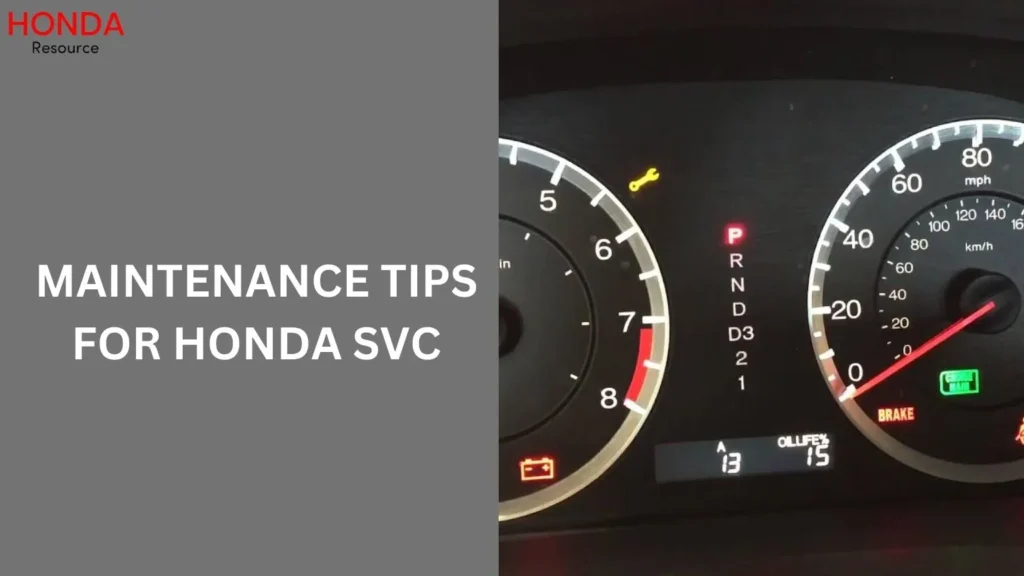
Maintaining your Honda Steering Vibration Control (SVC) system is crucial to ensure optimal performance and safety while driving. SVC plays a significant role in enhancing vehicle stability and steering response, making regular maintenance essential for preserving its functionality over time. Here are some maintenance tips to help you keep your Honda SVC in top condition:
Regular Check-Ups
Schedule periodic inspections with a certified Honda technician to assess the condition of your SVC system. Routine check-ups allow technicians to diagnose potential issues early and perform necessary adjustments or repairs before they escalate. Aim to schedule SVC maintenance during scheduled vehicle servicing intervals for comprehensive care.
Professional Servicing
Ensure that any maintenance or repair work related to your Honda SVC is conducted by qualified professionals. Certified Honda technicians have specialized training and access to manufacturer-specific diagnostic tools, ensuring accurate diagnosis and effective solutions for SVC-related issues. Professional servicing helps maintain the integrity of SVC components and optimizes system performance.
Diagnostic Tests
Utilize diagnostic tests to evaluate the functionality of SVC sensors, control units, and related components. Diagnostic tools can detect fault codes, irregular sensor readings, or communication errors within the SVC system. Performing diagnostic tests during maintenance appointments enables technicians to identify underlying issues promptly and implement necessary repairs or adjustments.
Software Updates
Stay updated with the latest software patches and firmware upgrades provided by Honda. Software updates are designed to address known bugs, improve system reliability, and enhance the performance of SVC features. Regularly updating SVC software ensures compatibility with vehicle updates and optimizes system responsiveness under varying driving conditions.
Environmental Considerations
Protect SVC components from environmental factors that can affect performance and longevity. Avoid exposing SVC sensors and control units to excessive moisture, dust, or extreme temperatures. Park your vehicle in a covered or sheltered area whenever possible to minimize exposure to environmental hazards that could compromise SVC functionality.
Driving Habits
Adopt safe driving habits that promote the longevity of SVC components and overall vehicle performance. Avoid aggressive driving maneuvers that could strain steering components or cause unnecessary vibrations. Smooth, controlled driving reduces wear on SVC sensors and enhances the accuracy of steering feedback provided by the system.
Periodic Calibration
Periodically calibrate SVC settings to maintain accurate steering response and minimize calibration errors. Consult with a certified technician to perform SVC calibration adjustments based on manufacturer recommendations or as indicated by diagnostic tests. Proper calibration ensures that SVC functions optimally and provides consistent steering control during various driving conditions.
Documentation and Records
Keep detailed records of SVC maintenance, including service dates, performed procedures, and diagnostic results. Documentation allows you to track SVC performance over time and facilitates timely maintenance scheduling based on manufacturer recommendations. Maintain a service log or digital record of SVC maintenance for reference during future servicing appointments.
Upgrading Honda SVC
As technology advances, newer versions of Honda SVC are becoming available. These upgrades often include enhanced features and better compatibility with other vehicle systems. If you’re considering an upgrade, consult with your dealer to understand the best options for your vehicle.
Cost of Honda SVC Maintenance
Maintaining your Honda SVC can vary in cost depending on the nature of the service. Typical service costs include diagnostics, part replacements, and labor. To save on costs, consider regular maintenance to prevent major issues and explore any warranty coverage that might apply to your vehicle.
User Experiences and Reviews
Real-life feedback from Honda drivers highlights the significant improvements in handling and safety provided by SVC. Many users appreciate the smoother driving experience and the peace of mind that comes with enhanced vehicle control. However, some common complaints include the cost of repairs and occasional system malfunctions.
Comparing Honda SVC with Competitors
When comparing Honda SVC with similar systems like Vehicle Stability Assist (VSA), Honda stands out due to its advanced sensor technology and integration with the vehicle’s overall dynamics. This seamless integration ensures a more intuitive driving experience.
Future of Honda SVC
The future of Honda SVC looks promising with ongoing innovations. Upcoming versions are expected to feature even more advanced sensors, AI-driven control units, and better integration with autonomous driving technologies. These advancements will likely set new standards in vehicle safety and performance.
People also ask
What is the SVC in Honda?
Honda SVC, or Steering Vibration Control, is a technology designed to enhance vehicle stability by detecting and minimizing vibrations in the steering system. It uses sensors to detect vibrations and adjusts steering responses to provide a smoother driving experience, especially on uneven or rough road surfaces. SVC helps improve steering control and comfort for drivers, contributing to overall vehicle safety and handling performance.
What does svc mean in civic?
In Honda Civic, SVC stands for Steering Vibration Control. It’s a technology that detects and reduces vibrations in the steering system, enhancing driving comfort and stability by smoothing out steering responses, particularly on rough or uneven road surfaces.
What is svc?
SVC stands for Steering Vibration Control. It’s a technology used in vehicles, like Honda models, to detect and minimize vibrations in the steering system. This helps improve steering stability and comfort for smoother driving experiences, especially on uneven road surfaces.
What is svc in speakers?
In the context of speakers, SVC typically stands for “Single Voice Coil.” It refers to a type of speaker configuration where there is only one coil of wire wrapped around the speaker’s former (a cylindrical tube around which the voice coil is wound). Single voice coil speakers are common in car audio systems and home audio setups, offering simplicity in wiring and installation compared to dual voice coil configurations.
Conclusion
Honda SVC is a game-changer when it comes to vehicle safety and performance. Its ability to enhance steering control and reduce vibrations makes driving a more pleasant and secure experience. Regular maintenance and staying updated with the latest advancements can ensure that your Honda SVC continues to provide optimal performance.

I’m Henry Leclerc, a passionate professional car mechanic with a deep love for Honda cars. With years of hands-on experience and extensive knowledge about all Honda car models, I’ve created this website to share my expertise and help fellow Honda enthusiasts keep their vehicles in top-notch condition.

